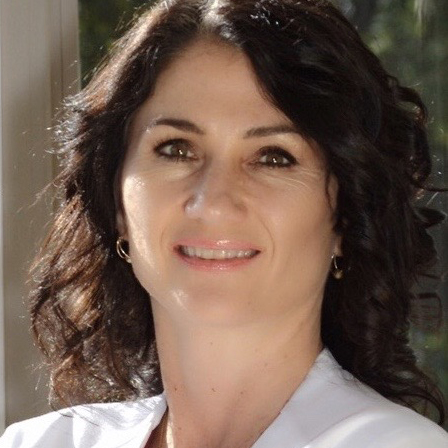Understanding Mold-Related Illness: Beyond Allergic Reactions
When patients come to my practice with mysterious symptoms like chronic fatigue, brain fog, respiratory issues, or unexplained mood changes, I always consider mold exposure as a potential underlying cause that conventional medicine frequently overlooks. As a functional medicine physician, I’ve learned that mold-related illness extends far beyond simple allergic reactions to encompass complex systemic dysfunction affecting multiple organ systems. In my clinical experience, patients with mold toxicity often present with seemingly unrelated symptoms including cognitive impairment, joint pain, hormone disruption, and digestive problems that previous doctors attributed to stress, aging, or psychiatric conditions. Mycotoxins produced by certain molds act as potent neurotoxins and immune disruptors that can create widespread inflammation and cellular damage throughout the body. Many patients spend years seeking answers for their deteriorating health while living or working in water-damaged buildings that harbor toxic mold species. Through detailed environmental histories and symptom assessment, I often discover patterns connecting symptom onset to specific locations, water damage events, or seasonal exposures that provide crucial clues about mold-related illness.
Advanced Testing for Mycotoxin Exposure and Genetic Susceptibility
Throughout my years treating mold-related illness, I’ve found that accurate diagnosis requires specialized testing that goes far beyond standard allergy panels to identify specific mycotoxin exposure and individual susceptibility factors. In my practice, I utilize comprehensive urine mycotoxin testing that can detect exposure to dangerous toxins including aflatoxins, ochratoxins, trichothecenes, and gliotoxins that create the wide range of symptoms my patients experience. I also assess genetic polymorphisms affecting detoxification capacity, particularly HLA-DR gene variants that determine how efficiently patients can eliminate mycotoxins from their bodies. Approximately 25% of the population carries genetic variations that make them unable to properly detoxify mold toxins, leading to accumulation and chronic symptoms even with relatively low exposure levels. My testing protocols include evaluation of inflammatory markers, immune function assessment, and organic acid analysis that reveals how mycotoxins are disrupting cellular metabolism and energy production. Through comprehensive laboratory evaluation, I can determine the specific types and levels of mycotoxin exposure while identifying individual factors that influence each patient’s ability to recover from mold-related illness.
Environmental Assessment and Elimination Strategies
As a functional medicine practitioner treating mold toxicity, I’ve learned that successful recovery is impossible without complete elimination of ongoing mold exposure, making environmental assessment and remediation absolutely critical for patient outcomes. In my practice, I work closely with patients to identify and address all sources of mold exposure including their homes, workplaces, vehicles, and personal belongings that may harbor toxic fungi. I recommend professional mold inspection and air quality testing by certified specialists who can identify hidden mold growth behind walls, under flooring, or in HVAC systems that patients cannot detect themselves. Many patients require temporary relocation during remediation to prevent continued exposure that sabotages recovery efforts. I also educate patients about cross-contamination risks from contaminated belongings, clothing, and furniture that can reintroduce mycotoxins even after environmental remediation. My environmental protocols include specific guidelines for safe re-entry after remediation, ongoing prevention strategies, and lifestyle modifications that reduce future mold exposure risk. Through comprehensive environmental management, patients can create the clean living spaces necessary for successful mold toxicity recovery.
Targeted Detoxification and Binder Protocols
In treating mold toxicity, I’ve developed comprehensive detoxification protocols that support the body’s natural elimination pathways while using specific binding agents that prevent mycotoxin reabsorption and facilitate safe removal. My treatment approach includes targeted binders like cholestyramine, activated charcoal, and chlorella that bind to mycotoxins in the digestive tract and escort them out of the body before they can be reabsorbed. I carefully time binder administration away from meals and supplements to prevent interference with nutrient absorption while maximizing mycotoxin elimination. Sauna therapy becomes essential for many patients, as sweating provides an important elimination pathway for fat-soluble mycotoxins that accumulate in tissues. I also utilize targeted nutrients that support liver detoxification including glutathione, N-acetylcysteine, and milk thistle that enhance the body’s natural ability to process and eliminate toxins. My protocols address potential detoxification reactions through careful pacing and supportive measures that minimize discomfort while ensuring effective toxin removal. Through systematic detoxification support, patients can safely eliminate accumulated mycotoxins and begin experiencing symptom relief.
Restoring Immune Function and Long-Term Recovery
After addressing mold exposure and implementing detoxification protocols, my focus shifts to restoring optimal immune function and supporting long-term recovery from the systemic damage caused by chronic mycotoxin exposure. Mold toxicity creates widespread inflammation, disrupts hormone production, impairs mitochondrial function, and compromises immune system regulation that requires comprehensive restoration efforts. In my practice, I implement targeted interventions to repair intestinal barrier function, restore healthy gut microbiome balance, and address nutrient deficiencies that developed during the illness. I utilize specific supplements including omega-3 fatty acids for inflammation reduction, probiotics to restore beneficial bacteria, and adaptogens to support stress resilience and immune system recovery. Sleep optimization becomes crucial, as restorative sleep is essential for immune function and cellular repair processes. My long-term recovery protocols include ongoing monitoring through follow-up mycotoxin testing, symptom tracking, and laboratory assessments that ensure patients maintain their progress while preventing relapse. Through comprehensive immune system restoration and ongoing support, patients can achieve lasting recovery from mold-related illness and regain their health and vitality.
If you are interested in learning more about the mold assessment please visit here https://www.vaughanvitality.com/resources/
Schedule Your Free Discovery Call
Talk to us and explore how we can help you.

